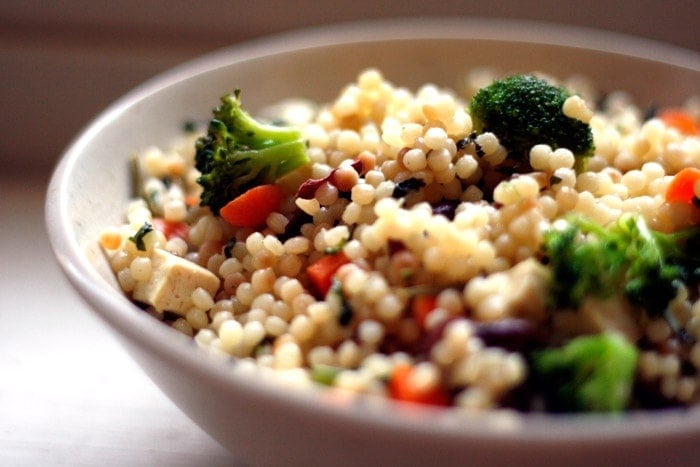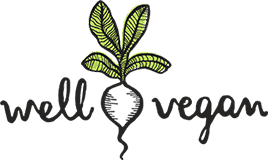
Contrary to popular belief, you can get all of the nutrients you need to lead an active, healthy life without eating animal products or animal byproducts. You just have to know how to create a balanced vegan meal that A.) Keeps you full and satisfied, and B.) Is lick-your-plate delicious.
If you’re struggling to fill your plate with foods that are healthy, tasty, and full of variety, here is your ultimate cheat sheet for creating a balanced vegan meal.
Protein
Chicken and beef aren’t the only ways to get your recommended daily protein intake. You can also find it in peanut butter, tofu, whole grains, rolled oats, quinoa, lentils, and beans.
Healthy Fats
The best food sources for healthy fats include avocados (my favorite), walnuts, almonds, pine nuts, olive oil, sunflower seeds, sesame seeds, and hummus.
Vitamin B12
This essential vitamin can be found in most fortified foods and drinks. Vegans can fill their quota with nutritional yeast, fortified breakfast cereal, and fortified soy products.
Calcium and Vitamin D
Those who follow a vegan meal plan can get their fill of calcium and vitamin D in cooked vegetables like kale, collards, Swiss chard, spinach and broccoli.
Iron
Iron is plentiful in a plant-based diet. You can find it in beans, lentils, nuts, leafy green vegetables, whole grains, and dried fruit. Tip: cook in cast iron cookware to boost your iron intake.
Complex Carbohydrates
Complex carbohydrates are the preferred fuel for the brain, red blood cells, and nervous system. Get your healthy carbs from quinoa, brown rice, roasted sweet potatoes, farro, and barley.
The key to adopting a vegan meal plan and sticking with it is focusing on all of the yummy things you can eat, not on what you can’t eat. If you make it a point to add at least one food from each of the categories above into each meal you make, you’ll reap all the benefits of a plant-based diet without feeling hungry, sluggish, or deprived.
Want to make the vegan transition SUPER easy? Take the Well Vegan meal plan for a test drive. Our weekly shopping lists and home-tested recipes take the guesswork out of creating a balanced vegan meal. Click here to get started!


Kim
I'm getting an error when I try to access the sample meal plan: "domain does not exist". Is it just me?? Please help.
Thanks.
ka
Well Vegan
Hey Kim! Sorry you're getting an error message. Here's a link to the sample meal plan: http://wellvegan.com/resources/sample-menu-and-meal-plan
John
This is a great article. I think that is probably the main concern of most people when trying to decide to change their diet to either vegetarian or vegan. I really like doing smoothies with all kinds of vegetables. I feel like I have vitamins in the bank that way.
Kate Kasbee
Glad you liked it, John! I think you're right. It can be intimidating to change your diet to vegetarian or vegan when you don't know where to get your nutrients. Smoothies are a perfect way to sneak a bunch of vegetables into your diet. Vitamins in the bank, indeed!